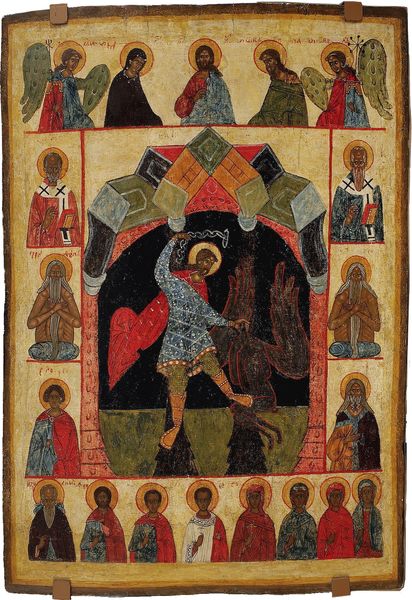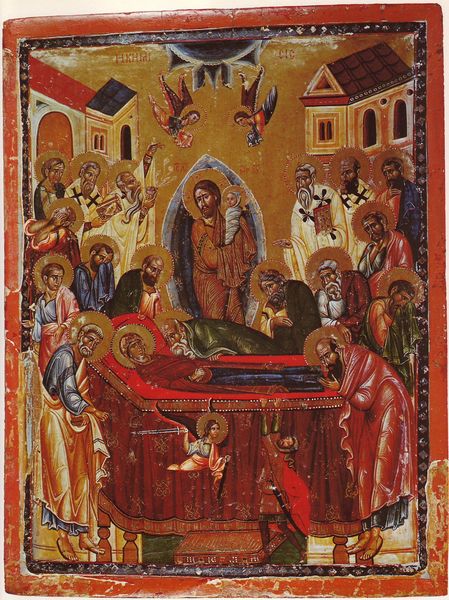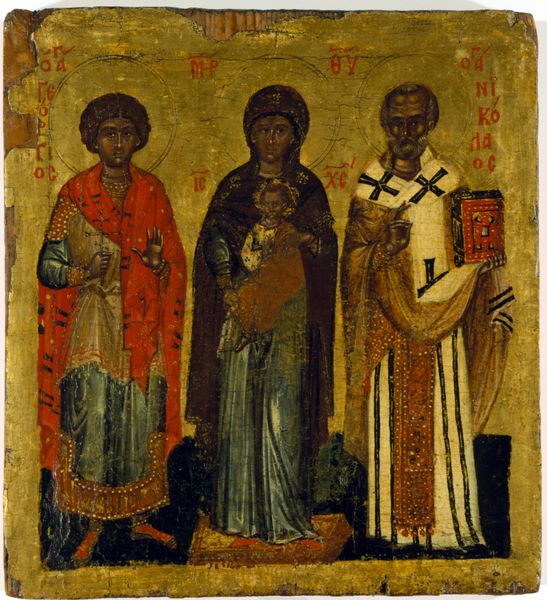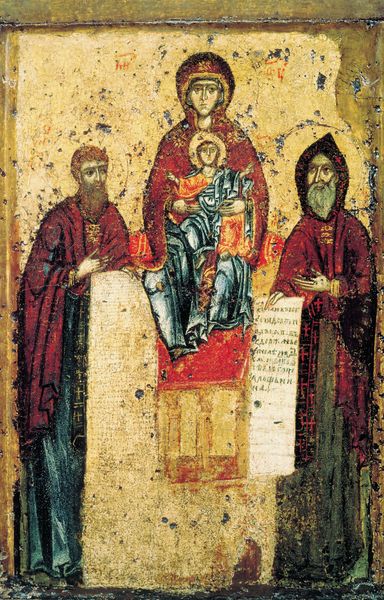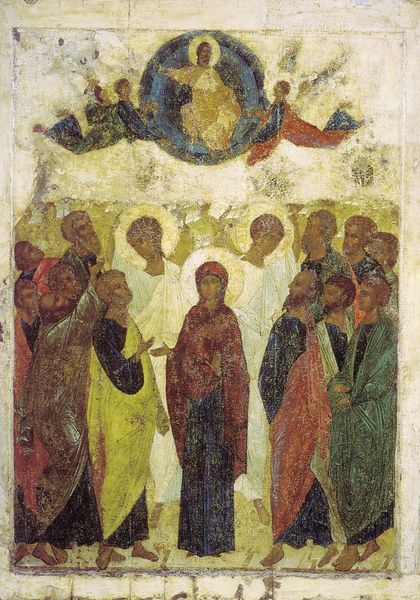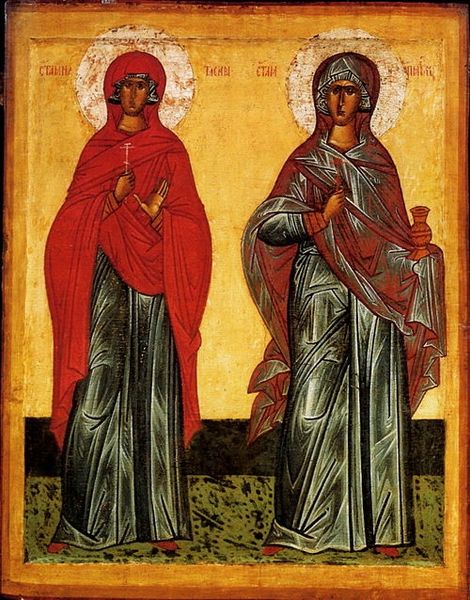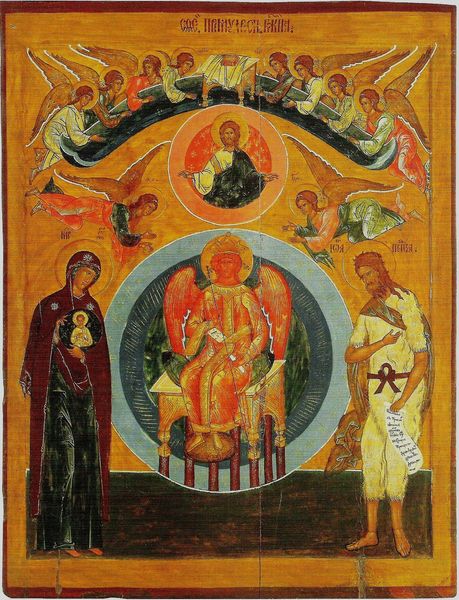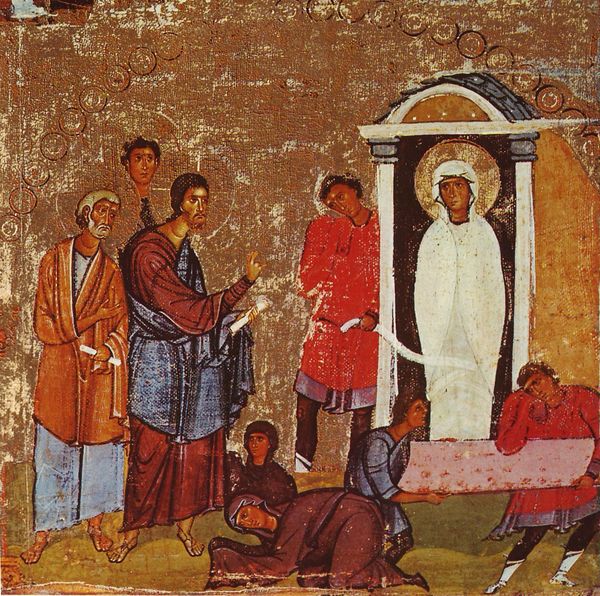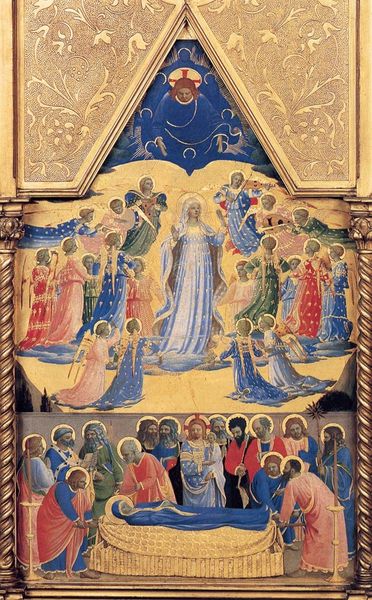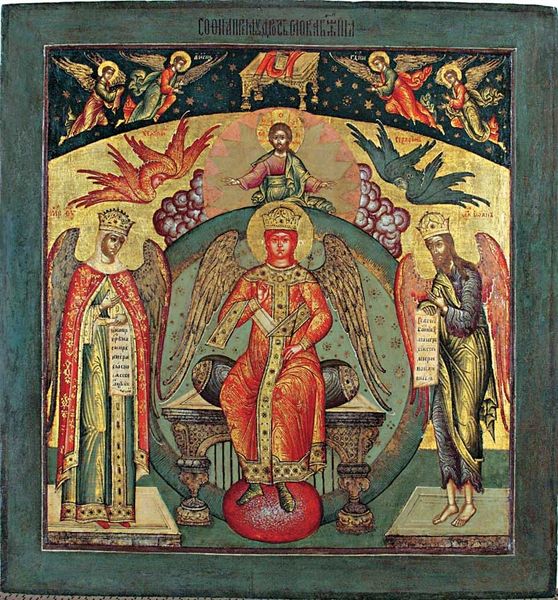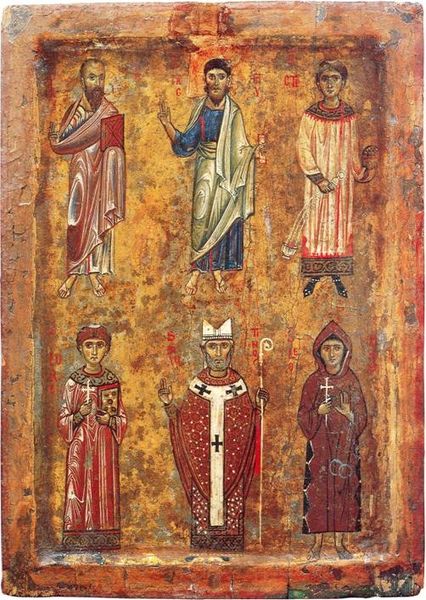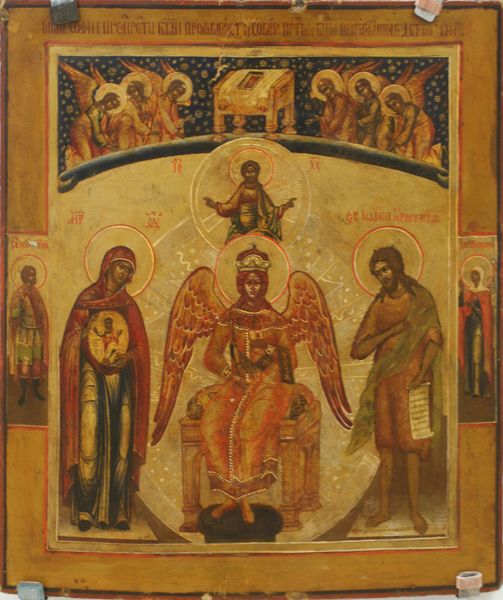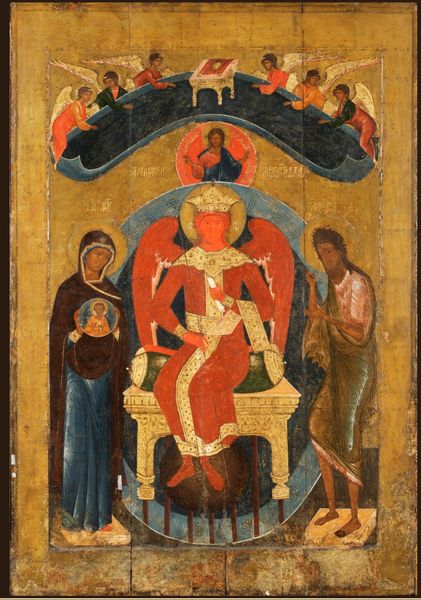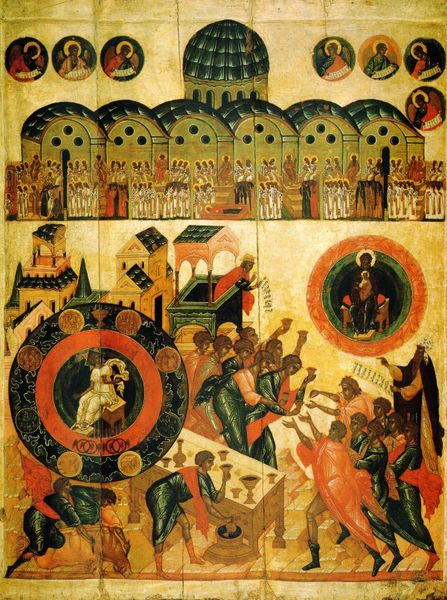
tempera, painting
#
byzantine-art
#
tempera
#
painting
#
figuration
#
oil painting
#
naive art
#
painting art
#
history-painting
Copyright: Orthodox Icons,Fair Use
Curator: This is "The Saviour of Chernobyl," an Orthodox icon created in 2011 using tempera. It’s striking, isn’t it? Editor: It certainly is. My immediate reaction is the contrasting visual registers. The upper section feels traditional, ethereal even, while the lower part, with its figures in what appear to be protective suits and masks, is starkly contemporary and earthbound. Curator: Exactly. Orthodox icons have a very specific, almost codified production process, focusing on natural materials like wood panels, gesso, and pigments mixed with egg yolk—tempera. This one interestingly merges those ancient techniques with a modern tragedy. Editor: Absolutely. Looking at the composition, the iconographic figures—Christ, the Virgin Mary, and a saint—float above a depiction of Chernobyl's aftermath, offering a spiritual lens on a disaster deeply embedded in our collective memory of environmental catastrophes. Curator: From a material perspective, consider how the artist adapted time-honored methods to convey this modern event. The layering of paint, the application of gold leaf, these processes lend a certain gravity to the subject. Editor: It makes me think about how art, and particularly religious art, responds to trauma. The inclusion of those figures, some appearing to be first responders, others perhaps survivors, forces us to consider the human cost, both immediate and generational, of such events. Their white clothing seems symbolic as well. Curator: Precisely, the use of tempera creates this distinctive eggshell finish, which catches the light in a way that feels both fragile and enduring—qualities reflecting the precariousness and resilience inherent in the Chernobyl story. I am intrigued to consider how the original intent behind Orthodox iconography traditions served the goal to process a contemporary tragedy. Editor: Right, by embedding this historical moment into the language of religious iconography, it transcends the specific event and enters into broader narratives about suffering, redemption, and the relationship between humanity, technology, and the environment. This icon reframes the industrial disaster and its social impact into a modern morality play about faith and community during times of immense crises. Curator: It does prompt questions about art’s function as a means of remembrance and bearing witness. I believe by considering the materials and processes that produced it, the impact of Chernobyl is presented through the symbolic representation of figures in relationship with nature. Editor: I agree. This blending of old and new is very thought-provoking. It certainly compels me to reflect on the intersection of faith, memory, and ecological responsibility in our contemporary world.
Comments
No comments
Be the first to comment and join the conversation on the ultimate creative platform.
